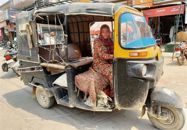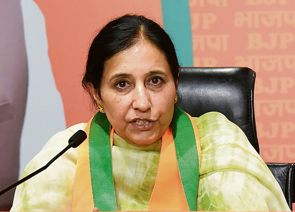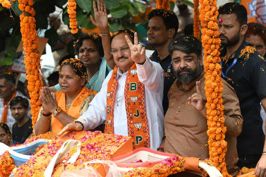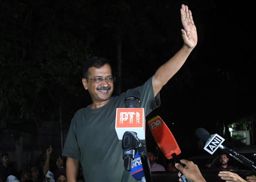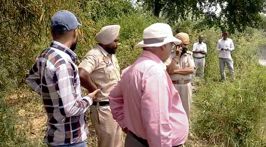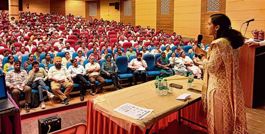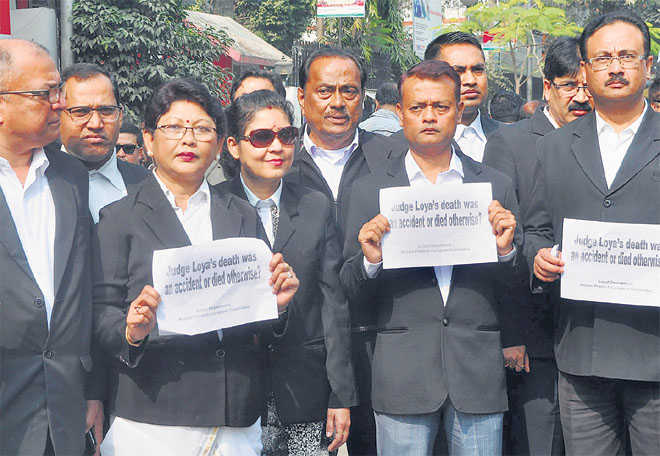
At stake: The Loya case was perceived as a test for the credibility of the highest court.
Yogendra Yadav
I have a confession to make. As I read the full judgment of the Supreme Court, after I had tweeted my initial reactions against it, I began to reconsider my reading of Judge Loya’s death. I felt it could well be a case of natural death, not murder.
As an admirer of Caravan’s courageous investigative journalism, I followed keenly its stories on the death of Judge Loya. As its stories kept piling new evidence, I started entertaining suspicions and was convinced that this was not a wild conspiracy theory. There were too many questions.
To the credit of Justice DY Chandrachud, his 114-page judgment answers many of these questions. The judgment takes up each of the main points raised by the petitioners and offers a point-by-point rebuttal. The court relies upon the statements of the four judges who say they accompanied Judge Loya to hospital that night. On the face of it, the statements by these “eyewitnesses” do not appear concocted.
But there are many unanswered questions still: why was the executive magistrate not present during the inquest, as legally required? How come Dr Prashant Rathi, a stranger to Judge Loya, identified the body? If the patient died of cardiac arrest, why did the hospital bill include neurosurgery? But then, no real life case is without complications and unanswered questions. Since there is no compelling evidence, no eyewitness to prove that it was indeed a murder, the benefit of the doubt must go to the accused. So, if it was a judgment on murder trial, one could hardly fault the Supreme Court for pronouncing “not guilty”.
The trouble is that it wasn’t. The Supreme Court is not a trial court, where witnesses give testimony sworn on oath and are cross-interrogated. It was not hearing an appeal in a criminal case, where evidence collection and examination had been completed and the court was to decide on the interpretation of evidence and law. The Supreme Court was not passing the final verdict on a criminal case, where the onus of producing sufficient evidence rests with the prosecutors and the benefit of the doubt goes to the accused.
In this instance, the question before the court was pointed: is there any basis whatsoever to entertain a reasonable suspicion and order an inquiry about the circumstances surrounding the death of Judge Loya? The highest court was approached not to examine the available limited evidence but to decide whether more evidence needed to be gathered.
The onus was on the government to show why even an inquiry was not necessary, why no further evidence was possible and needed. The petitioners were merely required to create a reasonable suspicion. From the judgment, it is clear that the petitioners succeeded in doing so: if the highest court of the land spends 100-odd pages in answering some questions, surely there were some reasonable doubts worth a clarification.
No doubt, there are legitimate differences on what is the basis for reasonable suspicion. In a normal case, it is best to accept the court’s word as the final on such matters. However, this was not a normal case. Not just because it involved the death of a judge who was conducting a very sensitive trial at a critical stage. Not just because the unnamed accused here was the second most powerful politician in the country. Not just because of the enormous public attention it has received in the last few months. And not just because four judges of the apex court had expressed reservations about how the case was being assigned by the CJI. But because all these four came together with a fifth element: this case came bang in the middle of a period when the independence of the judiciary is under trial by fire.
Judge Loya’s case had become a test case for the credibility of the higher judiciary. The text of this judgment was never going to be read by the public, its message was going to be heard far and wide. There were many waiting to hear this message: Judge Loya’s family, the extended family of the upright judicial officers all over the country and the law-abiding public at large. More than legal acumen and laboured evidence, they needed a gesture of confidence building.
What they got instead was a rebuttal. In doing so, the court may have achieved the opposite of what it sought to do: instead of settling this forever, it may have turned Judge Loya case into another Nagarwala-like legend that acquires a life of its own.
If there were any doubts about the message of this verdict, the last part of the judgment removes it. The court made adverse remarks on the petitioners, and the public interest advocates who appeared for the petitioners. Occasionally, the best lawyers with noble intention may end up pushing their case too hard; the judges may need to curb such over-enthusiasm or even admonish them. But the language of the judgment goes way beyond.
The court that had recently ordered the arrest of a sitting high court judge now admonishes the advocates for questioning the possibility that some district and high court judges may have been less than truthful in describing an incident they witnessed in their capacity as a citizen.
We do not know how this case would be remembered in history: would a future historian remember the three judges for standing up to “frontal attack on the independence of the judiciary”? Or the three lawyers, for standing for the independence of judiciary? The experience of the tame surrender by the judiciary during the Emergency, and the apology tendered by PN Bhagwati teaches us to wait for a few years.






